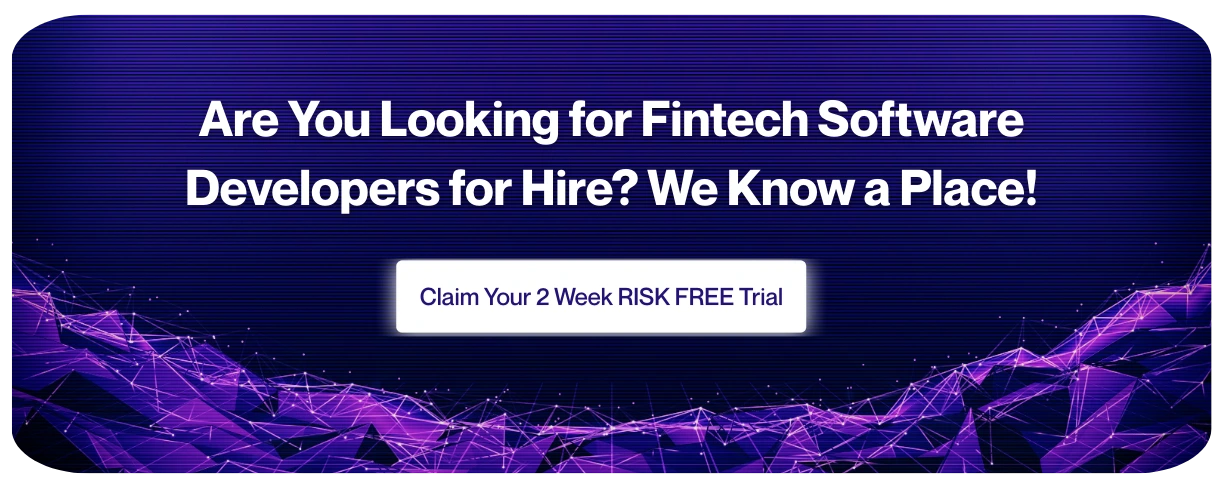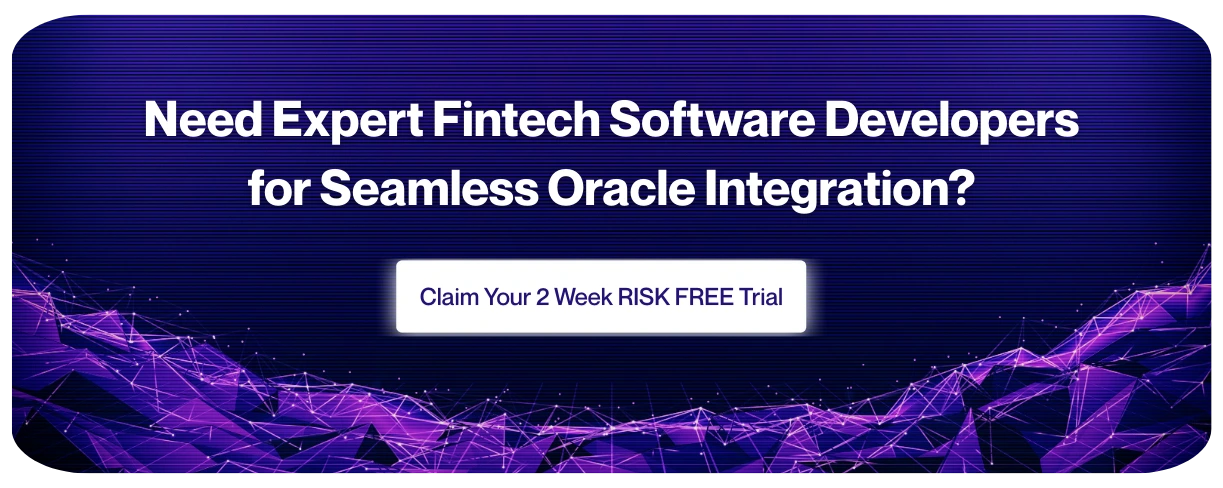SmartBenefits Scales with Fast AWS Migration & epicX Engineers
Resources aligned
HRTech / InsurTech
Pakistan
SmartBenefits is a fast-growing HRTech and InsurTech platform based in Pakistan, focused on simplifying employee benefits for SMEs. Their all-in-one platform allows companies to offer insurance, OPD, provident funds, and HR tools with ease.
As the startup geared up for launch, its leadership team needed a strong technical foundation, from infrastructure to platform architecture, without the high cost and long delays of traditional hiring.
With time-to-market pressure and resource constraints, SmartBenefits turned to epicX to find engineers who could get the product off the ground quickly.
SmartBenefits faced two mission-critical hurdles
The platform had to be built and scaled securely and reliably, with zero tolerance for downtime and high AWS optimization demands.
They needed highly specialized engineers fast without exhausting time or budget. Traditional hiring routes were too slow and expensive.
"We were at a stage where we needed top-tier engineers who could handle infrastructure, DevOps, and product-level thinking, without slowing us down. epicX delivered quickly and efficiently, helping us shape the product from scratch while staying lean."
- CTO, SmartBenefits
SmartBenefits partnered with epicX to accelerate product delivery and streamline infrastructure—without compromising on technical depth.
We delivered 3 qualified, pre-vetted platform architects in record time. All were interviewed, selected, and onboarded in just 9 days.
Our engineers led platform architecture decisions, data modeling, frontend logic, and infrastructure migration.
The full AWS migration was completed in record time, cost-optimized and security-compliant.
By hiring through epicX, SmartBenefits achieved 50–65% savings compared to hiring the same caliber of engineers in-house.
"epicX became an essential part of our journey. Their engineers were core contributors, not just freelancers. We were able to launch faster and leaner thanks to their focus, AWS expertise, and ability to work with startup constraints."
With epicX’s support, SmartBenefits went from idea to live product without compromising on performance, scalability, or compliance. Our team helped lay the groundwork for everything, from infrastructure to feature logic, making launch possible within a tight timeline.
The AWS migration saved both time and operational costs, while our developers’ contributions across frontend and backend shaped the product’s user experience and system stability.
SmartBenefits hired senior engineers at a fraction of in-house costs, without sacrificing quality or speed.
epicX sourced, screened, and placed engineers within just over a week, helping the team move fast.
We designed and migrated a cost-optimized, scalable AWS architecture tailored to their long-term roadmap.
Our engineers didn’t just support, they built. Their work directly enabled launch-readiness across core platform modules.
"We were looking for engineers who could wear multiple hats, DevOps, AWS, and product, and epicX nailed it. The quality of candidates was top-notch. They didn’t just help us launch, they helped shape what we launched. Anyone building in HRTech or InsurTech should consider epicX as a real partner, not just a vendor."

CTO, SmartBenefits

Remember when Web3 was a moonshot? Today, it’s a boardroom agenda item. If you’re a CTO or founder in fintech, the last twelve months have changed more than just the headlines; they’ve redrawn the roadmap for backend architecture, staffing, and product velocity.
Stripe’s Tempo blockchain and Chainlink’s surge aren’t just signals; they’re sirens. The gap between “traditional fintech” and Web3 isn’t just narrowing, it’s vanishing.
Here’s the truth: what was once considered experimental or niche, on-chain payments, decentralized data, and compliance-by-code, is now shaping your roadmap.
For many, this shift brings as much anxiety as excitement. Engaging expert fintech software development services and building agile fintech teams can provide the competitive edge needed to navigate this transition.
Are you architecting for Web3 today, or letting legacy thinking hold you back? The next wave is here. Startups that wait risk falling behind.
Stripe is no stranger to moving fast, but its latest play, Tempo, a high-performance Layer 1 blockchain, might be its boldest yet. Designed for payments at scale, Tempo is EVM-compatible and led by Matt Huang, a heavyweight from Paradigm.
This is not a half-measure. Stripe’s acquisitions and the stealth build of Tempo signal an intent to own the full tech stack, from stablecoin rails to crypto wallets.
For Ethereum developers, that means leveraging familiar smart contract tools but at Stripe’s velocity. The implications are clear: fintechs must now consider how new networks like Tempo can fit seamlessly into their existing architectures without compromising speed or reliability.
Meanwhile, Chainlink is quietly becoming the connective tissue between legacy markets and DeFi innovation. Its decentralized oracles aren’t just about crypto price feeds anymore; they’re pulling institutional-grade data, thanks to partnerships with giants like ICE.
Picture this: FX rates and precious metals pricing flowing on-chain, powering hybrid products that blend the credibility of TradFi with the transparency of Web3.
No wonder Chainlink’s LINK token surged approximately 42% in a week after the news. The market is paying attention for good reason. The ability to access trusted, real-time off-chain data is no longer a luxury; it’s foundational to building competitive fintech products that combine traditional and blockchain-based data sources.
For startups aiming to stay at the forefront, leveraging fintech software development services that can integrate Chainlink’s oracles efficiently into your backend is critical.
Skilled fintech software development teams help you tap into these real-time data feeds with security and scalability, ensuring your product meets growing customer expectations.

For years, I watched fintechs hesitate on Web3. With Stripe and Chainlink leading, that hesitation is no longer safe. What happens to your product if your competitors can settle payments instantly on-chain or access global price feeds in real-time?
Of course, copying Stripe’s or Chainlink’s playbook isn’t a silver bullet. Not all protocols or integrations are created equal. But ignoring these shifts?
That’s a risk you simply can’t afford. The startups that will win are those that adapt quickly and integrate these new rails into their tech stack, rather than playing catch-up.
Modern fintech backends are evolving. The old monolithic models are giving way to modular architectures, where blockchain logic is decoupled from legacy business systems.
Why does this matter? Because modularity lets you swap or upgrade your blockchain components without rewriting the entire app. This shift isn’t just theoretical; it’s already standard practice for fintechs operating at startup speed.
Stripe’s Tempo and Ethereum’s own evolution prove this point: protocol upgrades, account abstraction, new features, all integrated without breaking what came before (see how Ethereum pulled it off).
For CTOs, this means future-proofing your architecture so you can pivot as the ecosystem evolves, not just react after the fact.
Decentralized oracles have moved from “nice-to-have” to “must-have.” For example, fintech startups leveraging real-time oracles have reduced settlement times from days to minutes, fundamentally transforming product offerings and customer expectations.
Chainlink’s oracles are powering not just DeFi, but real-world financial products, enabling hybrid use cases that weren’t possible just a few years ago. Plugging into these data streams safely and scalably is now a baseline requirement, not an edge case.
The competitive edge now lies in how quickly teams can integrate and react to new data, not just in building novel protocols.
Here’s where things get messy: integrating on-chain logic with traditional finance means juggling heightened security, complex compliance, and unpredictable scalability challenges.
While seamless integration is the goal, achieving it is rarely straightforward, especially when bridging compliance and on-chain logic. We’ve seen startups stall for months trying to retrofit legacy codebases to new protocols.
One common pitfall is underestimating the complexity of merging on-chain and off-chain compliance controls, which often results in unexpected delays and increased technical debt.
Achieving true scalability and compliance requires not just technical expertise, but a deep understanding of regulatory frameworks and a proactive approach to risk management.
It’s tempting to gloss over the technical debt and regulatory headaches that come with this transition. But let’s be honest: these are the friction points that separate the survivors from the casualties.
Startups that address these head-on, with the right people and processes, set themselves up to move faster when the market demands it.

It’s one thing to find resources who “know blockchain.” It’s another to find those who thrive in the ambiguity and relentless pace of a startup.
The shortage of experienced blockchain protocol engineers who also understand fintech’s regulatory and business context is real, and growing.
Fintechs face a shortage of experienced blockchain protocol engineers, particularly those who understand both blockchain technology and financial regulations.
Fintech startups must prioritize hiring engineers with both protocol expertise and a proven track record in regulated environments to avoid costly missteps during product launches.
The difference between success and failure often comes down to how well your team can navigate both technical and compliance demands at startup speed.
This is where epicX’s fintech software development services become vital, providing pre-vetted resources who blend technical mastery with deep domain knowledge.
I’ve worked with founders who lost months (and plenty of sleep) to contractors who just didn’t get the pace. The cost isn’t just money, it’s lost market share.
Traditional outsourcing models, built for slow-moving enterprises, simply don’t translate. Between misaligned incentives, process bloat, and lack of product accountability, these arrangements drain focus and create existential risk for startups.
The right engineering partner or staff augmentation provider acts as your velocity partner from day one, understands your product, and operates as a true co-builder.
This is why epicX provides fintech software development teams with cultural fit, time zone overlap, and hands-on collaboration as standard. When your next release is mission-critical, you need resources who’ve delivered under real startup pressure, not just anyone with protocol knowledge.
Resources who can navigate both the protocol landscape and the startup grind are rare.
In our experience, the solution isn’t just more resumes, it’s a higher standard of vetting and a clear focus on ownership-driven teams. I’ve seen teams double their velocity by simply removing the friction of misaligned hires and legacy processes.
Ownership-driven teams not only accelerate delivery but also proactively identify and resolve issues before they become bottlenecks, a critical advantage in fast-moving fintech markets.
Building a culture of ownership and agility is the foundation for enduring success in the Web3 era.
What’s your next step? Is your backend ready for Stripe’s Tempo, for on-chain data, and for the next market shock?
With epicX, you can secure pre-vetted fintech software developers in as little as 48 hours, ensuring your team is both Web3-ready and startup-strong.
If you are scaling a blockchain product or modernizing your fintech stack, you might want to consider a discovery call to discuss your hiring goals, or you can view their case studies and see how the team at epicX has helped growth-stage startups accelerate product delivery.

Stripe Tempo is a new high-performance Layer 1 blockchain, designed for payments and stablecoin infrastructure, and is compatible with Ethereum smart contracts. Its launch signals that blockchain protocols are becoming foundational to modern fintech backends. CTOs and founders need to ensure their systems are modular, EVM-compatible, and ready for on-chain integrations.
Chainlink provides decentralized oracles that bring real-world and institutional data (e.g., FX rates, metals pricing) on-chain. This enables fintech startups to build hybrid products that leverage both traditional and Web3 data. Secure, real-time data feeds are now essential for competitive fintech innovation.
Many engineers have technical blockchain skills but lack experience operating in high-velocity, ambiguous startup environments. The ability to integrate quickly, take ownership, and align with startup priorities is as critical as protocol knowledge. epicX addresses this by pre-vetting for both technical and cultural fit. See how it works.
Best practices include modular backend design, EVM compatibility, integrated decentralized oracles, secure wallet infrastructure, and scalability through Layer 2 or high-performance chains, often achieved through custom software development tailored for fintech needs. Compliance automation and API-first approaches are also recommended.
Fractional CTO support allows startups to access architectural and product strategy expertise and tap into top startup tech talent without full-time hires. epicX offers this as part of its model, ensuring delivery oversight and long-term product focus. Get started here.
epicX can match you with pre-vetted fintech software developers in as little as 48 hours. These resources are not just technically proficient, they’re startup-ready, culturally aligned, and experienced in regulated fintech environments. Our process ensures you can scale without losing time to lengthy recruitment cycles or mismatched hires.
Traditional outsourcing often leads to misaligned incentives, process bloat, and slow delivery. epicX’s fintech software development teams integrate directly into your workflows, operate in your time zone, and take ownership from day one. This founder-friendly, staff augmentation model ensures you maintain velocity while tapping into the top 5% of global engineering talent.
epicX offers a 2-week risk-free trial so you can evaluate the developer’s fit without pressure. If you are not fully satisfied, we arrange a quick replacement at no extra cost, ensuring your project stays on track.
Skip the job boards, candidate ghosting, and weeks of screening.
Get top-tier engineers matched to your stack, ready to deliver.
No proxies, No middlemen. Just velocity.
2-Week No-risk trial. Pay only if satisfied.
✓ 50+ tech stacks
✓ 94% success on first match
✓ Talent matched in under 48 hours